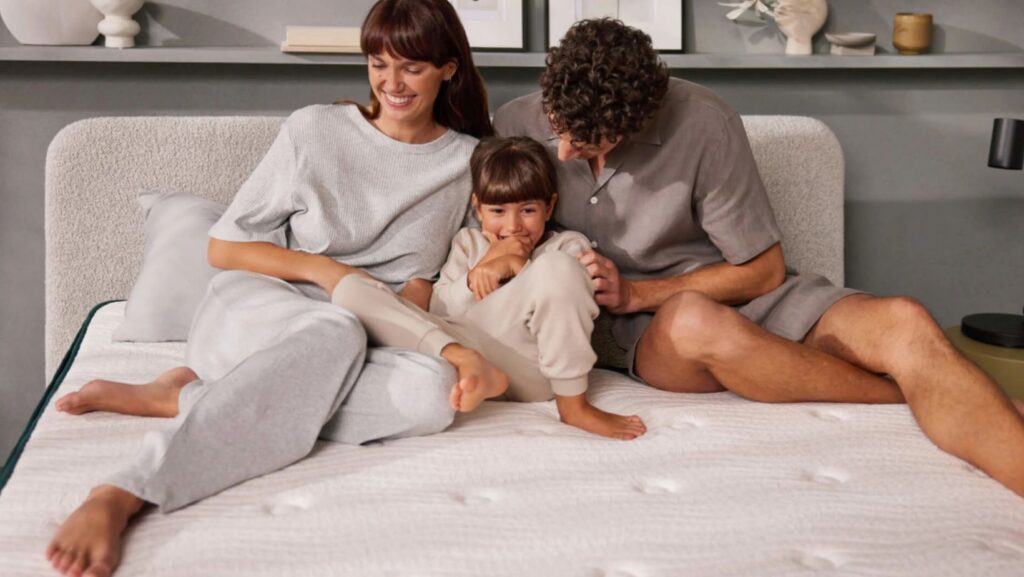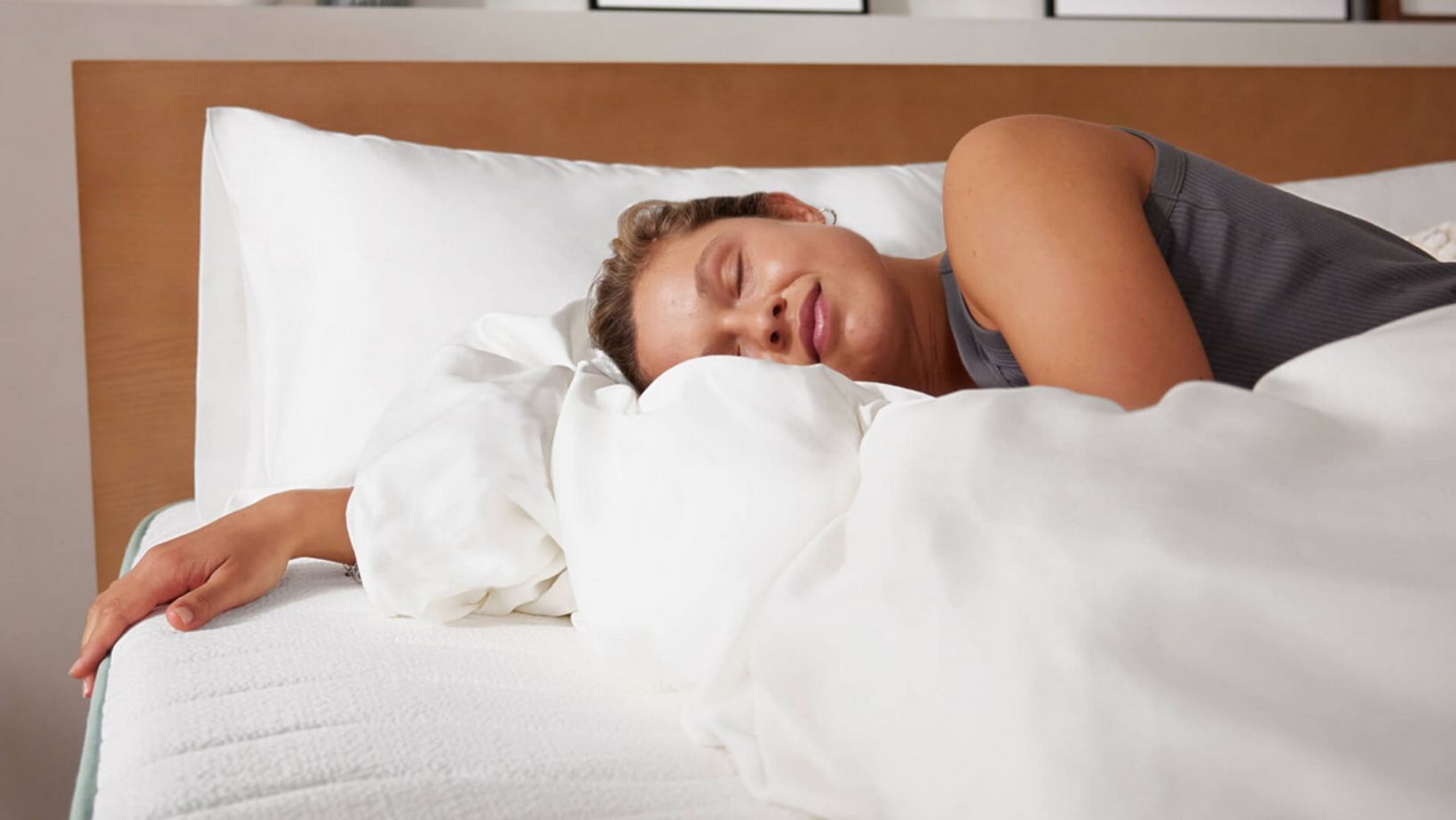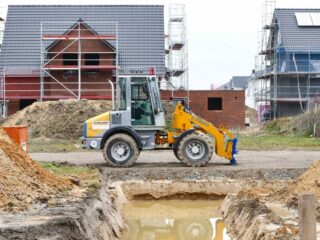
A saggy or unsupportive mattress doesn’t just steal your comfort; it silently drains your wallet through premature replacement. Many shoppers replace a mattress in under six years due to early wear, motion woes, or collapsing edges.
This guide will arm you with every tool you need to buy once and rest easy for up to a decade or more. We’ll decode construction jargon, compare popular models, and give you a printable checklist so you can avoid mattress shopping again anytime soon.
Do You Need a New Mattress? 7 Red-Flag Signs
If two or more of these sound familiar, it’s time to shop:
- Visible sagging deeper than 1.5 inches in the areas where you sleep.
- Waking with new aches or stiffness that seem to resolve after sleeping in a different bed, like at a hotel.
- Feeling lumps, dips, or coils poking through the top comfort layers.
- Sudden squeaks or rising motion transfer that rattles you or your partner awake.
- Persistent chemical odors (off-gassing) that linger long past the first few weeks.
- An expired or voided warranty, especially after spills or using an improper base, that caused damage.
- Major life changes such as significant weight gain or loss, a new partner, or an injury that alters your support needs.
The Science of Mattress Longevity
Material Density & ILD
The density of foam is a primary indicator of its durability. For polyfoam and memory foam, look for a density of at least 4 pounds per cubic foot (lb/ft³). Indentation Load Deflection (ILD) measures not just firmness but also wear-resistance, as foams with a higher ILD rating typically take longer to break down.
Coil Count & Gauge (Innerspring/Hybrid)
In mattresses with a steel coil core, two numbers matter most. The gauge indicates the thickness of the wire, with a lower number meaning a thicker, more durable coil. For optimal longevity, aim for a gauge between 13 and 14.5. The pocket-coil count in a queen-size mattress should be 800 or more to ensure even weight distribution.
Edge Support Systems
A mattress with weak edges is prone to premature collapse and creates a roll-off sensation. Robust edge support is achieved through high-density foam rails or a perimeter of reinforced coils. This is crucial for maintaining a usable sleep surface from edge to edge, which is especially important for couples.
Cover & Stitching Quality
The mattress cover and its construction contribute to longevity. Heavy-duty handles, double-needle stitching, and high-quality textiles with a weight above 350 grams per square meter (gsm) are more resistant to tears and stretching when you rotate or move the mattress.
Warranty Length & Terms
A long warranty can signal a manufacturer’s confidence in its product. Non-prorated warranties, which cover the full replacement cost for a set period, offer far better protection than prorated ones, which require the buyer to pay a percentage of the replacement cost over time.
Certifications
Certifications from third-party organizations verify material safety and quality. Look for labels like CertiPUR-US® for foams (ensuring low VOCs), OEKO-TEX® for textile safety, and GOLS for organic latex.
When searching for true rest, finding the correct medium-firm mattress becomes your priority. A Koala’s ergonomic mattress is designed for minimal motion transfer and ensures deep, uninterrupted sleep night after night.
| Key Insight: For durability, focus on the numbers: foam density should be over 4 lb/ft³ and coil gauge should be under 14.5. These two specs are the strongest predictors of a mattress’s lifespan. |
Mattress Types Explained
Innerspring (Expected Lifespan: 5–7 yrs)
A quality innerspring utilizes tempered coils plus a dedicated lumbar pad. In durability tests, it showed minimal height loss after thousands of compression cycles.
- Pros: Excellent bounce, superior airflow for cool sleeping, and generally easier to move.
- Cons: Can develop sags more quickly if the coil gauge is higher than 14, and offers lower motion isolation.
Memory-Foam (6–8 yrs)
A well-made memory foam mattress with a high-density top layer will show strong resistance to wear in roller tests, indicating long-term durability.
- Pros: Superior pressure relief, often budget-friendly, and completely silent.
- Cons: Can retain heat, especially with lower-density foams, and may have weaker edge support.
Latex (8–12 yrs)
A good latex mattress can show no measurable indentation after extensive lab simulations, a performance backed by a long non-prorated warranty.
- Pros: Made from natural materials, offers a buoyant and responsive feel, and is exceptionally durable.
- Cons: Heavier than other mattress types and typically comes with a higher upfront price.
Hybrid (7–10 yrs)
Top-tier hybrids pack over 1,000 low-gauge pocket coils with dense comfort foam, earning high scores for edge support in third-party tests.
- Pros: Combines the airflow and support of coils with the contouring comfort of foam or latex.
- Cons: Often heavier and more complex, with quality that can vary widely between brands.
| Pro Tip: For maximum longevity, latex is the clear champion. However, a quality hybrid with a low-gauge coil system (under 14.5) offers a close second in durability with superior airflow and bounce. |
Match Your Mattress to Your Sleep Style & Body Profile

Back Sleepers
A medium-firm feel is ideal for keeping the spine in a neutral alignment. Look for models with zoned coil systems or denser foam in the center third of the mattress to prevent the hips from sinking too far.
Side Sleepers
A softer top is necessary to cradle the shoulders and hips, preventing pressure points. A comfort layer thicker than 3 inches provides ample cushioning for this position.
Stomach Sleepers
A firm surface prevents the mid-section from sagging, which can strain the lumbar spine. This sleep style pairs well with a low-loft pillow to keep the neck aligned.
Combination Sleepers
Responsive surfaces like latex or buoyant hybrids make it easier to switch positions without feeling stuck. These materials quickly adapt to new movements throughout the night.
Budget vs Value: How Much Should You Spend?
Price often correlates with durability. Here are the general price bands:
- <$500: Often basic all-foam mattresses with an expected lifespan of 3–5 years.
- $500–$1,000: Entry-level hybrids and decent memory-foam models with a 6–8 year lifespan.
- $1,000–$2,000: Premium hybrids and latex blends with reinforced edges, lasting 8–12 years.
- $2,000+: Pure latex, hotel-grade coils, and luxury fabrics, with warranties up to 25 years.
Consider the return on investment. The best times to buy are typically during major holiday sales like Presidents’ Day and Memorial Day. Many brands also offer interest-free financing and trials to reduce purchase risk.
Health & Safety Considerations
Petroleum-based foams can release compounds known as off-gassing. These VOCs dissipate in the first week. It’s best to unbox your new mattress in a well-ventilated room and run a fan to speed up the process.
According to the CPSC, mattress manufacturers must meet the U.S. Consumer Product Safety Commission’s flammability standard. Reputable manufacturers use inherent fire barriers like silica-infused rayon or natural wool instead of chemical spray-on retardants.
Certifications: Prioritize mattresses with certified foams and latex to ensure they are free from harmful substances. A mattress protector with a breathable barrier can also help cut residual odors faster while shielding against spills that could void your warranty.
Invest in a Mattress That Lasts
A durable mattress isn’t a luxury; it’s a smart financial and health decision. Check foam density, coil gauge, and warranty terms to avoid premature sagging and nightly discomfort. The time you spend researching now can lead to years of better sleep and better health.












